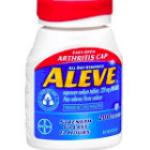Join Cameron English and Dr. Chuck Dinerstein on Episode 99 of the Science Dispatch podcast as they discuss:
NSAIDs
It's not easy being in pain these days. Tylenol is virtually useless, something you probably already know.
Open a random medicine cabinet, and there's a very good chance you'll see a bottle of ibuprofen.
I recently wrote how Antibe's experimental analgesic/anti-inflammatory drug, otenaproxesul, something that would represent a quantum leap in chronic pain management, ran into quite a snag (See
Back in March, I gave an update on the progress of otenaproxesul (aka ATB-346), an experimental hydrogen sulfide-based NSAI
Last year, I wrote an article about Antibe Therapeutics' potentially revolutionary drug (1), ATB-
There has been considerable speculation that NSAIDs might be harmful to people who are suffering from the aches and pains of a COVID infection. Back in March Olivier Vér
Before we get started please note that this study is not from a peer-reviewed journal. In fact, it's not even in a journal article.
Dr. Wallace, thank you so much for agreeing to answer some questions that arose from my article Pain Relief And No Ulcers?












